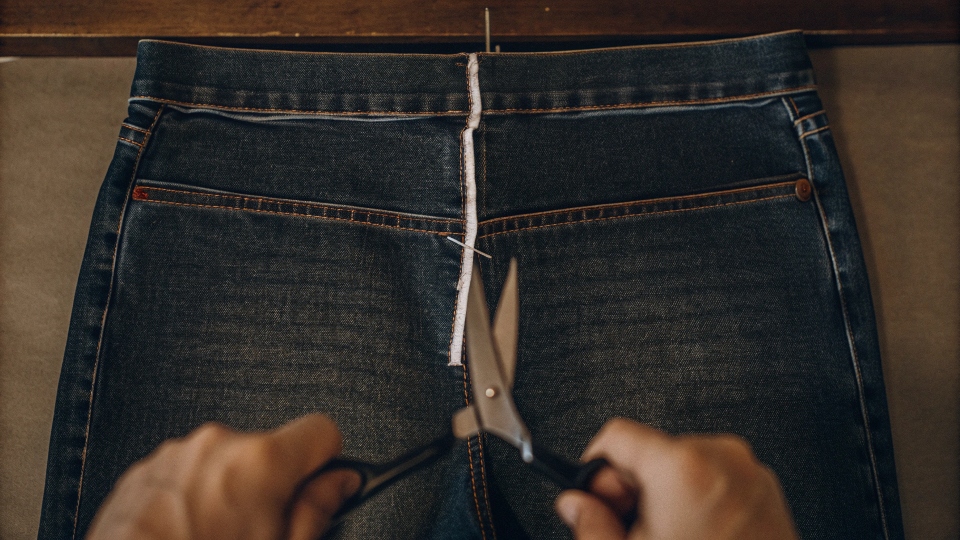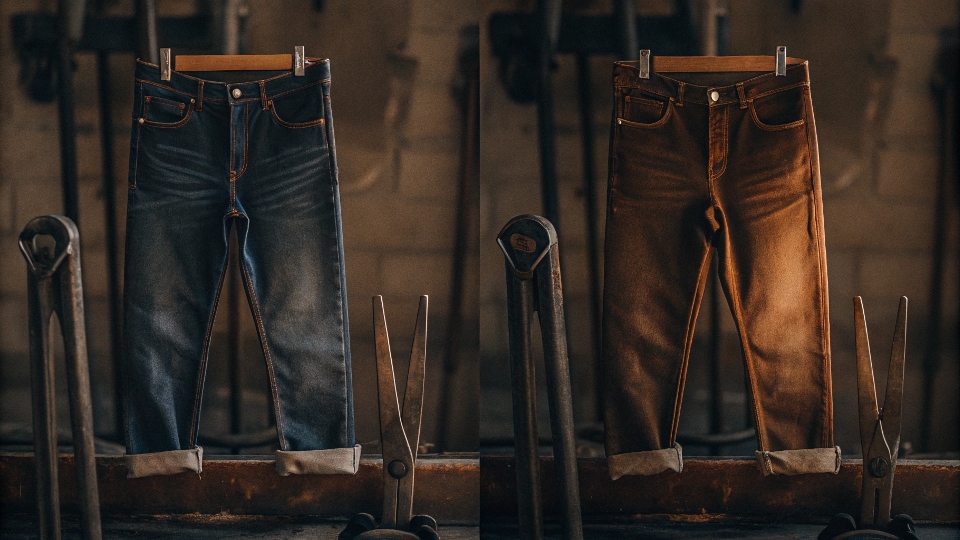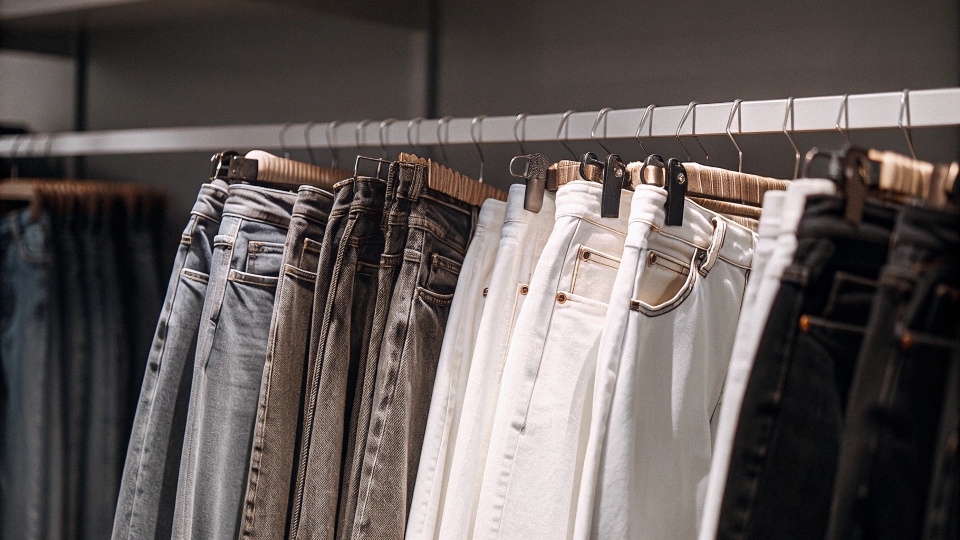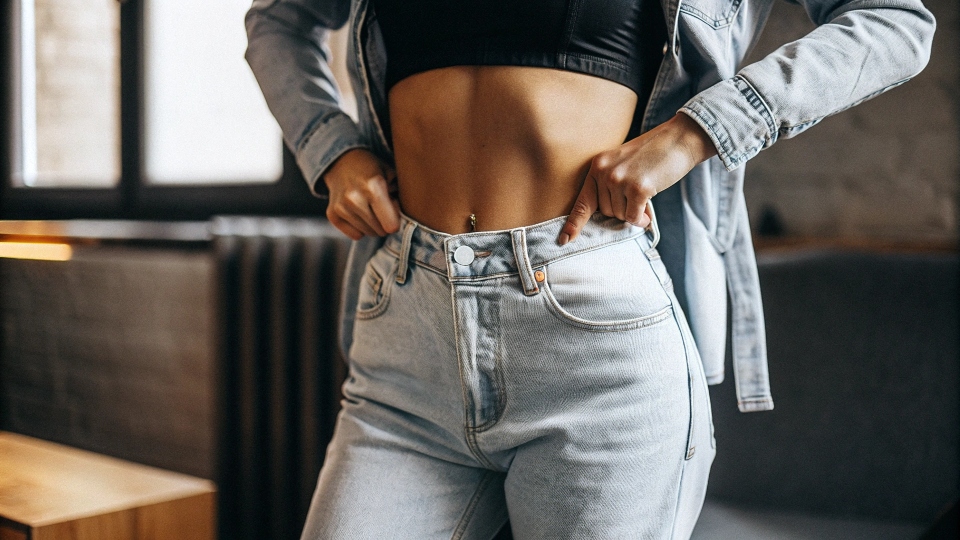You love a pair of low-rise jeans, but wish they had a modern high waist. It seems impossible to just add fabric. However, with some skill, this alteration can be done.
Yes, you can make low-rise jeans1 high-waisted, but it is a complex alteration. It requires adding a new piece of matching denim to the top of the jeans to extend the rise before reattaching the waistband.
After more than 20 years of manufacturing jeans, I have seen every possible customization. Designers like Dean often ask my team about altering samples, and changing the rise is one of the most common requests.
It can completely change the silhouette of a garment. While it is not always easy, it is important to know what is possible. Let's explore the reality of changing the rise of your jeans.
Can You Make High-Waisted Jeans Low-Rise?
You found the perfect pair of high-waisted jeans2, but the fit is not for you. You love the fabric and wash, but wish they were low-rise. This is a simple fix.
Yes, you can easily alter high-waisted jeans to be low-rise. This process involves removing fabric from the top of the jeans, which is much simpler than trying to add fabric.
This is one of the easiest major alterations you can make to a pair of jeans.
I've seen it done countless times. Because you are removing material rather than adding it, the process is very direct. First, you try on the jeans and mark exactly where you want the new, lower waistband to sit.
Then, a tailor will carefully remove the original waistband by unpicking the stitches. After that, they cut the excess fabric from the top of the jeans, leaving a small seam allowance. Finally, they shorten the original waistband to match the new, smaller opening and reattach it.
The result is a clean, professional-looking pair of low-rise jeans that retain the original leg shape and fabric. This is far less challenging than trying to make low-rise jeans higher.
Can the Rise of Jeans Be Altered?
You have a pair of jeans that just doesn't sit right on your torso. You wonder if the rise is something that can be fixed. The answer is yes, but the difficulty varies.
Yes, the rise of jeans can be altered in both directions. Shortening the rise by cutting fabric is straightforward. Lengthening the rise is much more difficult because it requires adding new fabric.
In my factory, we produce jeans with every rise imaginable, from ultra-low to super-high. Altering the rise after the fact is a common request, so it's important to understand the difference between the two main types of changes.
Shortening the Rise (High to Low)
This is the easy direction. As we discussed, it is simply a matter of removing excess fabric from the top. The biggest challenge is making sure the new waistline is cut evenly.
Lengthening the Rise (Low to High)
This is where things get complicated. You can't just stretch the fabric; you have to add a new piece of denim.
A skilled tailor must find a fabric that perfectly matches the color and weight of the original jeans. They will then sew this new panel onto the top of the jeans to extend the rise.
This creates a new seam below the waistband which can be bulky and difficult to hide. It's a job that requires a lot of skill to look good. Stretch denim makes this even harder, as the fabric can warp when cut and re-sewn.
| Alteration | Difficulty | Core Task |
|---|---|---|
| Shortening Rise | Easy | Removing fabric |
| Lengthening Rise | Difficult | Adding fabric |
Why Don't They Make Low-Rise Jeans Anymore?
You remember when low-rise jeans were in every store. Now, they are hard to find. It can feel like your favorite style has completely disappeared from the fashion world.
Low-rise jeans are less common now because fashion trends shifted towards comfort and more inclusive fits. High-waisted jeans offer better coverage and are widely considered more flattering on a variety of body types.
As a manufacturer, I follow trends very closely. The shift away from low-rise jeans was a major change in the denim market. There were a few key reasons for this. First was practicality and comfort.
Many people found low-rise jeans uncomfortable. They didn't offer much coverage when sitting or bending down. The rise of high-waisted jeans in the 2010s was a direct response to this.
High-waisted styles provide support and a feeling of security. They also coincided with a growing movement towards body positivity.
High-waisted jeans are often marketed as a universally flattering fit that a wider range of people can feel confident in. They define the natural waist and create a smooth line over the hips.
While we are seeing a small comeback of Y2K fashion3, the ultra-low rise has not returned to the mainstream. The demand is just not there like it was twenty years ago.
What Body Types Do Low-Rise Jeans Fit Best?
You're thinking about trying the low-rise trend but are unsure if it will suit you. You worry that it's a difficult style to wear. Low-rise jeans can be very flattering on certain body shapes.
Low-rise jeans tend to flatter body types with longer torsos, or those with athletic or pear-shaped builds. They sit on the hips, which can help balance proportions and avoid gapping at the waist.
Over the years, I've learned that fit is about proportions, not just size. Low-rise jeans work especially well for some body types4.
For people with a straighter, more athletic build, high-waisted jeans can sometimes gap at the back of the waistband. Because low-rise jeans sit on the hips, this is less of an issue. They can also create a very clean, streamlined look.
For those with an hourglass or pear shape, where the hips are wider than the waist, low-rise jeans can be great for highlighting those curves. By sitting below the natural waist, they draw the eye directly to the hips.
Similarly, someone with a shorter torso might find that low-rise jeans help to visually lengthen their upper body.
Of course, these are just guidelines. The most important rule in fashion is to wear what makes you feel good. If you love the way low-rise jeans look on you, that is the only thing that matter
-
Explore the advantages of low-rise jeans and how they can enhance your style and comfort. ↩
-
Discover the reasons behind the popularity of high-waisted jeans and how they flatter various body types. ↩
-
Understand the resurgence of Y2K fashion and its impact on modern denim trends. ↩
-
Learn which body types are best suited for low-rise jeans to enhance your fashion choices. ↩

[^2]'s hands measuring the rise of a pair of jeans with a tape measure](https://diznewjeans.com/wp-content/uploads/2025/10/yes-you-can-make-low-rise-jeans-high-waisted-b.jpg)









